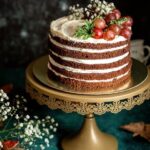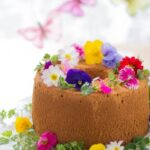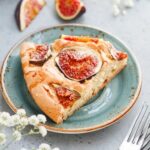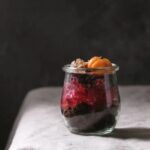Have you ever wondered: can any airbrush be used for cake decorating? In the world of cake decorating, airbrushing has become a popular technique for creating stunning designs and beautiful finishes on cakes. An airbrush is a versatile tool that allows decorators to apply color and create artistic effects with precision and control. However, using the right airbrush is crucial for achieving professional results and ensuring food safety.
When it comes to choosing an airbrush for cake decorating, there are several factors to consider. Different types of airbrushes are available in the market, each with its own set of pros and cons for cake decorating. Factors such as air pressure requirements, needle and nozzle size, as well as cleaning and maintenance are important considerations when selecting the right airbrush for your cake decorating needs.
Using the wrong airbrush for cake decorating can pose risks such as clogging, uneven color distribution, or even contamination. Professional recommendations can guide decorators in making informed choices when it comes to selecting an appropriate airbrush for their specific cake decorating projects. In this article, we will explore different types of airbrushes for cake decorating, factors to consider when choosing an airbrush, as well as beginner-friendly and advanced options that cater to various skill levels and budgets.
Types of Airbrushes for Cake Decorating
When it comes to cake decorating, choosing the right airbrush is crucial for achieving professional-looking results. There are different types of airbrushes available in the market, each with its own set of pros and cons for cake decorating. Understanding these variations can make a significant difference in the outcome of your decorated cakes.
One type of airbrush commonly used for cake decorating is the gravity-feed airbrush. This type utilizes a cup on top of the airbrush to hold the paint, allowing for easy color changes and efficient use of paint.
On the other hand, there are also siphon-feed airbrushes which have a bottle or jar that sits underneath the gun to hold the paint. While this type may not be as convenient for frequent color changes, it
Another consideration is whether to choose a single-action or dual-action airbrush. Single-action airbrushes release both air and paint simultaneously when the trigger is pressed, making them easier to use especially for beginners. On the contrary, dual-action airbrushes allow for greater control over airflow and paint flow, enabling more precise detailing and shading on cakes.
When selecting an airbrush for cake decorating, it’s important to choose one that meets specific requirements such as air pressure needs, needle and nozzle size, as well as ease of cleaning and maintenance. Paying attention to these factors
Factors to Consider When Choosing an Airbrush for Cake Decorating
When choosing an airbrush for cake decorating, there are several factors to consider in order to ensure the best results. It’s important to take into account the specific requirements of cake decorating and choose an airbrush that meets those needs. Here are some key factors to consider when selecting an airbrush for cake decorating:
- Air Pressure Requirements: Different types of airbrushes have varying air pressure requirements. For cake decorating, it’s important to choose an airbrush that can provide a consistent and controlled airflow. This will allow for precise detailing and shading on your cakes.
- Needle and Nozzle Size: The size of the needle and nozzle on an airbrush can significantly impact the level of detail and precision you can achieve in your cake decorating. Fine details require a smaller needle and nozzle size, while broader coverage may benefit from larger sizes.
- Cleaning and Maintenance: Cake decorating often involves working with edible colors and food-grade materials. It’s essential to choose an airbrush that is easy to clean and maintain to prevent any cross-contamination or clogging issues.
Considering these factors when choosing an airbrush for cake decorating can help you make an informed decision that ensures the best possible results. Each factor plays a crucial role in achieving professional-looking decorations on your cakes.
Ultimately, using the right airbrush for cake decorating can make all the difference in the end result of your creations. By carefully considering these factors, you can select an airbrush that is well-suited for the specific demands of cake decorating, allowing you to elevate your skills and create stunning designs on your baked goods.
Can Any Airbrush Be Used for Cake Decorating?
When it comes to cake decorating, using the right airbrush can make a significant difference in achieving professional results. Airbrushes are handheld tools that use compressed air to spray food coloring onto cakes, creating beautiful and intricate designs. However, not all airbrushes are suitable for cake decorating, and it is important to choose the right one for this specific purpose.
Types of Airbrushes for Cake Decorating
There are several types of airbrushes available in the market, including gravity feed, siphon feed, and side feed airbrushes. Each type has its own pros and cons when it comes to cake decorating. Gravity feed airbrushes are often recommended for cake decorating due to their ability to work with finer details and require less air pressure.
Factors to Consider When Choosing an Airbrush for Cake Decorating
Several factors should be taken into consideration when choosing an airbrush for cake decorating. These include the air pressure requirements of the airbrush, as well as the needle and nozzle size. It is also important to consider the ease of cleaning and maintenance of the airbrush, as this can impact its longevity and performance.
Can Any Airbrush Be Used for Cake Decorating?
Not just any airbrush can be used for cake decorating. Using the wrong type of airbrush can lead to issues such as inconsistent spray patterns, clogging, or even damage to the cake’s surface. Professional recommendations suggest using a gravity feed airbrush with a small nozzle size specifically designed for food use when decorating cakes.
Beginner-Friendly Airbrushes for Cake Decorating
When it comes to cake decorating, finding the right airbrush is crucial for achieving professional results. Beginners who are looking to venture into the world of cake airbrushing may feel overwhelmed with the plethora of options available in the market. It’s important to understand that not all airbrushes are created equal, and choosing the right one can make a significant difference in the outcome of your cake decorations.
One common question that arises among beginners is, “Can any airbrush be used for cake decorating?” The answer is no – not all airbrushes are suitable for cake decorating. In fact, using the wrong type of airbrush can lead to disastrous results such as uneven spray, clogging, or even damaging the delicate surface of a fondant-covered cake. Therefore, it’s essential to choose an airbrush specifically designed for food use and cake decorating.
For beginners, it’s recommended to start with a dual-action gravity feed airbrush, which allows for more control over the airflow and paint output. These types of airbrushes are beginner-friendly and relatively easy to use for those who are new to airbrushing techniques. Additionally, they are usually more budget-friendly compared to high-end professional models, making them a practical choice for those who are just starting out in cake decorating.
When choosing a beginner-friendly airbrush for cake decorating, it’s also important to consider ease of maintenance and cleaning. Some models come with user-friendly cleaning systems and detachable parts that make it easier to keep the airbrush in good condition. Investing in a quality beginner-friendly airbrush can set the foundation for honing your skills in cake decorating and pave the way for creating beautifully airbrushed cakes in the future.
| Types of Airbrushes | Pros | Cons |
|---|---|---|
| Dual-action gravity feed | Allows for more control over airflow and paint output | May have a learning curve for beginners |
| Siphon feed | Works well with larger volumes of paint | Less precise control compared to gravity feed |
Advanced Airbrushes for Cake Decorating
High-End Airbrush Options for Professional Decorators
For professional cake decorators who are looking for top-of-the-line airbrushes, there are several high-end options available in the market. These airbrushes are designed to meet the rigorous demands of professional cake decorating and offer advanced features that can elevate the quality of airbrushed designs. High-end airbrushes often come with precision control, multiple nozzle and needle options, and durable construction that can withstand heavy use.
Advanced Features and Capabilities
One of the key reasons why advanced airbrushes are favored by professional decorators is their advanced features and capabilities. These airbrushes
Investment-Worthy Options for Serious Cake Decorators
While high-end airbrushes may come with a higher price tag, they are considered investment-worthy options for serious cake decorators. The durability and performance of these airbrushes make them essential tools for professionals who rely on consistent results and efficiency in their work. Investing in a high-quality airbrush ensures that decorators can achieve precise detailing, smooth color transitions, and overall professional-looking finishes in their cake designs.
Tips for Using an Airbrush for Cake Decorating
Using an airbrush for cake decorating can elevate your creations to a whole new level. With the right technique and tools, you can achieve professional-looking results that will impress your clients or guests. In this section, we will explore some valuable tips for using an airbrush for cake decorating to help you enhance your skills and create stunning edible masterpieces.
Proper Technique for Airbrushing Cakes
When using an airbrush for cake decorating, it’s important to maintain a consistent distance between the airbrush and the surface of the cake. Holding the airbrush too close can result in uneven coverage and potential dripping, while holding it too far away may lead to overspray and lack of control. Practice on a test surface before applying the airbrush to your actual cake to get a feel for the proper distance and pressure.
Common Mistakes to Avoid
One common mistake when using an airbrush for cake decorating is applying too much color at once, resulting in a blotchy or uneven appearance. To avoid this, start with a light layer of color and gradually build up intensity as needed.
Additionally, be mindful of overspray and mask off any areas of the cake that you don’t want to be colored. Another mistake to avoid is neglecting proper cleaning and maintenance of your airbrush, which
Achieving Professional Results With an Airbrush
To achieve professional results with an airbrush for cake decorating, practice is key. Familiarize yourself with different techniques such as stenciling, shading, and fine detailing to create intricate designs on your cakes. Experiment with different types of food colorings and learn how they interact with different cake surfaces. By honing your skills and embracing creativity, you
Conclusion
In conclusion, it is evident that not just any airbrush can be used for cake decorating. The right airbrush makes a significant difference in achieving professional results and ensuring the safety of the cake. Factors such as air pressure requirements, needle and nozzle size, as well as cleaning and maintenance play a crucial role in selecting the most suitable airbrush for cake decorating.
It is important to consider the compatibility of different airbrushes for cake decorating to avoid the risks associated with using the wrong one. Professional recommendations also emphasize the importance of choosing the right airbrush to ensure optimal results and avoid potential issues during the decorating process.
For beginners, there are entry-level airbrush options that are beginner-friendly, easy to use, and budget-friendly. On the other hand, advanced airbrush options cater to professional decorators with advanced features and capabilities. These high-end options are considered investment-worthy for serious cake decorators who are looking to elevate their skills and artistry.
In closing, using the right airbrush for cake decorating is essential for achieving professional results and maintaining the quality and safety of the cakes. It is recommended that readers explore different airbrush options based on their skill level and needs to enhance their cake decorating techniques through this versatile tool.
Frequently Asked Questions
Can You Use a Regular Airbrush for Cakes?
Yes, you can use a regular airbrush for cakes as long as it is thoroughly cleaned and designated specifically for food use. Make sure it doesn’t contain any non-food-safe materials or residue.
What Are the Different Types of Airbrushes for Cake Decorating?
The different types of airbrushes for cake decorating include gravity feed, which uses less air pressure and allows for more detailed work, and siphon feed, which holds more color and is better for larger areas.
Can I Use Regular Food Coloring in My Airbrush?
While it’s possible to use regular food coloring in your airbrush, it’s not recommended due to the thickness of the coloring and the potential clogging of the airbrush. It’s best to use specially formulated airbrush colors for optimal results.

Welcome to my blog about home and family. This blog is a place where I will share my thoughts, ideas, and experiences related to these important topics. I am a stay-at-home mom with two young children. I hope you enjoy reading it! and may find some helpful tips and ideas that will make your home and family life even better!





